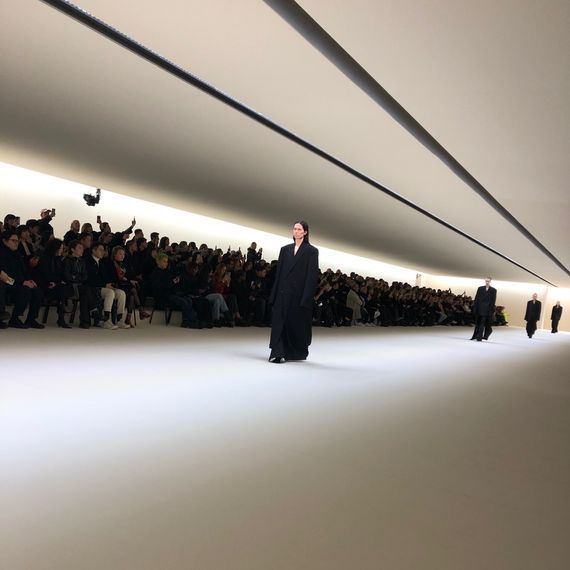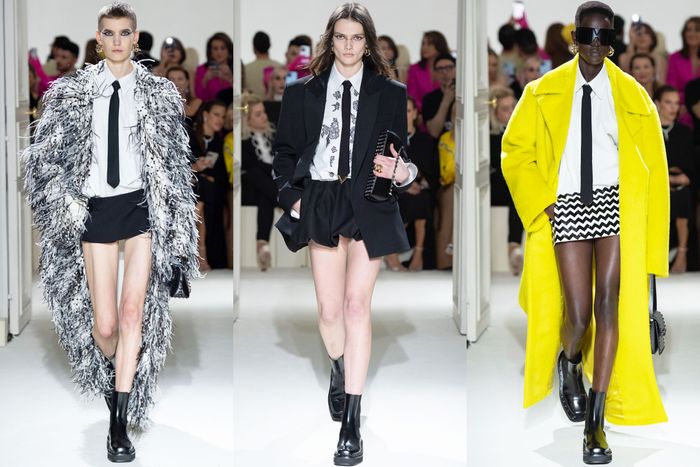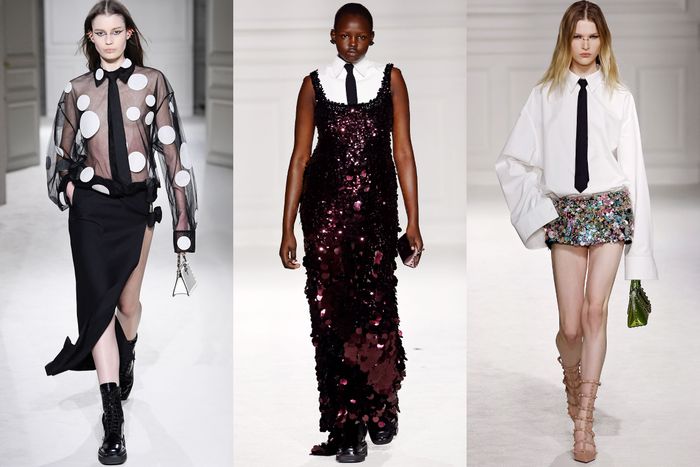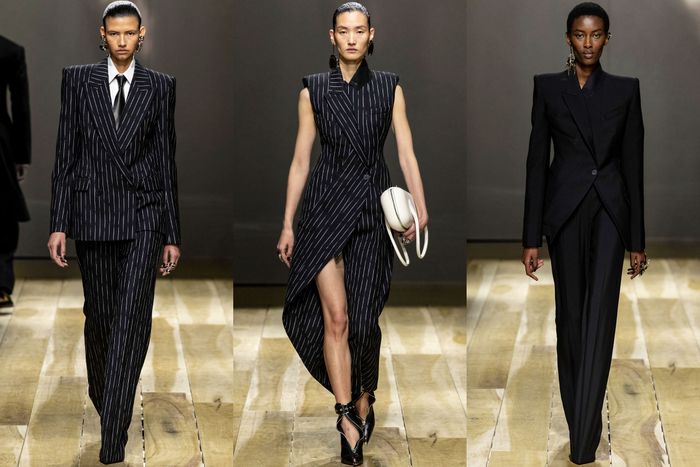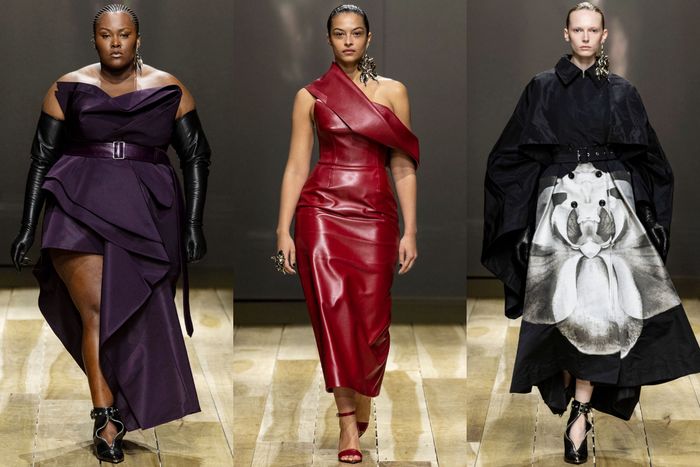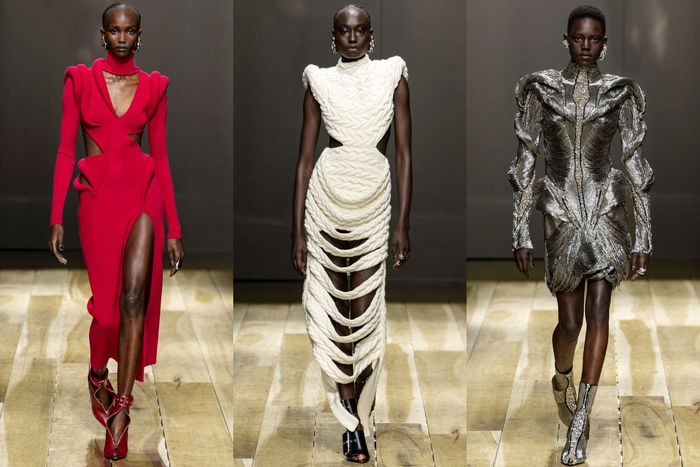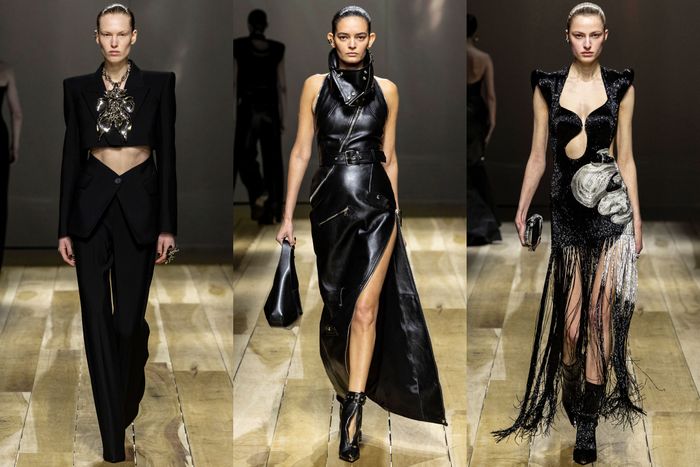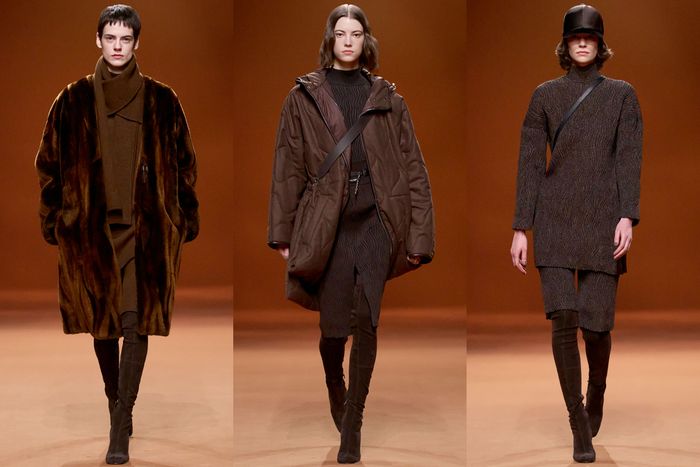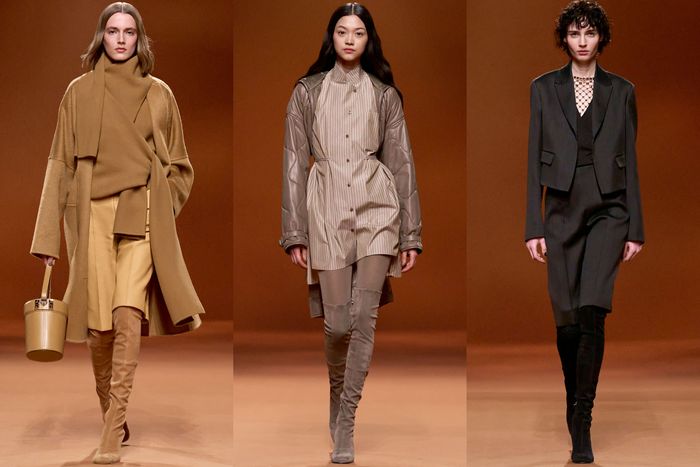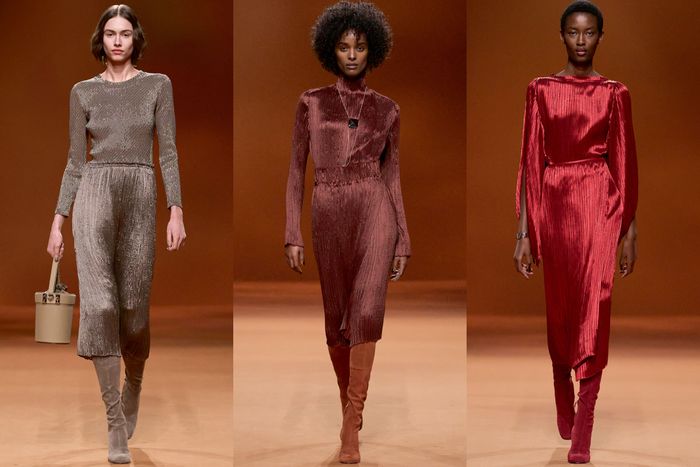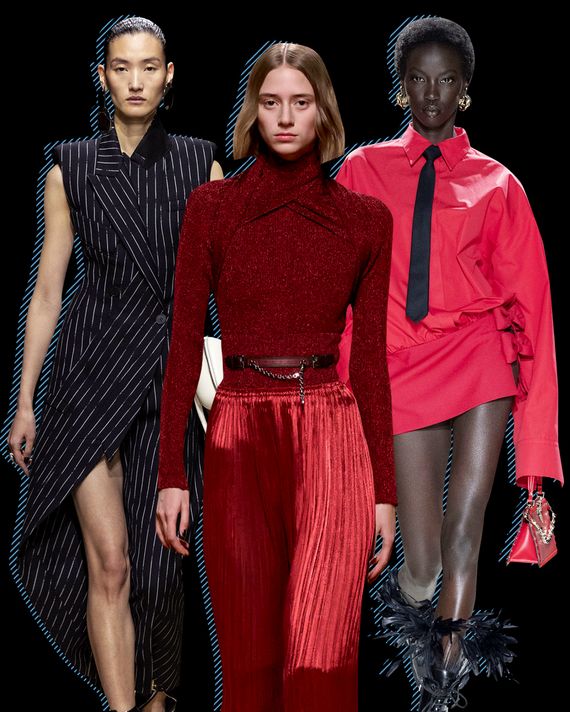
Considering Balenciaga’s recent trouble, it’s striking how calm the scene was outside its show. Almost everywhere else in Paris, you have to walk through a screaming gauntlet of spectators and celebrity hunters, with pockets of fangirls in matching colors suddenly going berserk. I was on my way into Valentino on Sunday night, in a former private mansion, when the crowd went full animal: “Anna! Anna!” I saw the smooth bob of Anna Wintour dart from her black car a few meters ahead. I tripped on a cobblestone.
But Balenciaga was calm and assured at every step, proof that leading houses don’t have to chase youth or clicks quite so desperately — unless, of course, they’re seriously muddled. One thing I forgot to mention in my review of Demna’s show for Balenciaga was the lighting design. It was masterful. There were few visible fixtures in the long, off-white room and none above the runway. Demna had said he wanted to scale things back — instead of doing another spectacular set — but that did not mean resorting to a basic white box with ugly lights and rigging. That sort of consideration was generally missing from Pierpaolo Piccioli’s Valentino show.
Its theme was “black tie” and how young people subvert formality, whether a school uniform or office dress — something generations of punks have done. Unfortunately, Piccioli’s cool kids, in their shades, skinny ties, and six-inch minis, looked like a cross between Hedi Slimane hipsters and Harry Potter. There’s an irony in the fact that Valentino has one of the greatest reserves of beauty and specialized glamour — in its archive, in its place in high culture — and yet Piccioli, instead of being a leader, aims for mass tastes, for what is easily accessible.
There’s a growing divide between brands that know who they are — that is, have integrity — and those that blow with the wind. Hermès and Alexander McQueen belong to the first camp. Not only did they produce exceptional collections, among the best this season, but they also argued for taking a long-term approach to creativity.
Nadège Vanhee-Cybulski has been the women’s designer at Hermès for nearly a decade (Hermès dates from 1837 and is still managed by the same family). Sarah Burton has been the creative director of McQueen since 2010 but has been closely involved in its design for 26 years. Considering the industry’s current Dracula practice of turning over designers for fresh blood infusions, you can understand why so many brands don’t have a clear and distinct identity. And often why their designers can’t even meet a minimum standard of showing clothes that fit properly. Burton and Vanhee-Cybulski certainly know how to make clothes, but they’re also curious to find new ways of evoking nature — a mutual love — or using the complex heritage of their very different brands.
Burton opened with a blast of tailoring — strict and sharp-shouldered pantsuits and coats, or bustier and sleeveless coat dresses in black and chalk-striped flannel — that freshen Lee McQueen’s aesthetic of strong femininity. She called the collection “Anatomy,” in part because her clothes have lately, and gratifyingly, been more body conscious and less decorative, but also because the house is built on tailoring. “It’s almost going back to the beginnings of McQueen, to where he started, Savile Row,” she said.
The look is indelibly McQueen, but Burton has sharpened it a bit so that the shape dissents from the sea of tailoring offered everywhere this season. A number of writers saw something of Lydia Tár in the suits, indeed her intense self-awareness; there’s a scene in Tár where Cate Blanchett is fitted at a tailor’s. But then Blanchett often wears McQueen. Just as strong were long knit dresses with slashes and raised bits that suggested the curve of a rib — or the outline of an orchid, another reference in the collection. The knits are a wonderful evolution of a style Burton introduced late last year.
Burton has at her fingertips a knowledge of Lee McQueen and uses it lightly and with feeling. The broken chalk-stripe pattern might reference a pinstripe, in red, that McQueen used for a 1998 show called “Joan,” based on the Catholic martyr. The circular set, with a ring of videos inspired by the motion studies of the Victorian photographer Eadweard Muybridge, definitely alludes to “Joan,” which was done in the round. And Burton played the same music from that show, except backward. I also want to note that the company had one of the best casts this season. In addition to the French singer and songwriter Yseult, Burton had about 15 men and women who weren’t professional models. They are artists, dancers, actors, and friends of the house.
At Hermès, Vanhee-Cybulski’s aim was quite different. Her colors came from nature and also human hair — browns, reds, blondes, and silver. But she was also inspired by the unconscious ways that women sweep their hair into a ponytail or a messy bun. That led her to design coats in leather, alpaca, and double-face cashmere that, instead of buttons, have an interior system of knitwear — a scarf or soft belt that you can wrap around your waist or neck.
It’s kind of genius and contributes to her clothes’ casual attitude. But the collection is full of such considerations. There’s a shearling coat dyed in the black-and-brown pattern of bark, which also inspired the texture of ribbed knitwear that’s thick and intended to feel protective. “It’s about working the shearling with the know-how of fur — because today fur is politically incorrect,” she said. “But we have a great know-how. And shearling is also quite humble, so it’s good to work on the sophistication.” One telling thing she did was to open up the neckline of the coat, in a V-shape, to make it more flattering.
Vanhee-Cybulski also brought the same thinking, and colors, to clean-line dresses in pleated lamé, some combining the lamé with a knit top or yoke beaded in the same tone. “You think of Norman Norell,” she said, referring to the American designer of the ’40s, ’50s, and ’60s. I didn’t think of him, but I’m glad she mentioned the king of chic simplicity.
“It’s relaxed but sophisticated,” she said of the lamé dresses, which, like everything else in her superb collection, were shown with close-fitting and matching over-the-knee boots. “It’s a good balance,” she added. And how novel that is this season in Paris.
More From Paris Fashion Week
- The Best Street Style From Paris Fashion Week
- A Clever Chanel Show
- Mother Cain Walked Miu Miu. (So Now I Want Miu Miu.)



